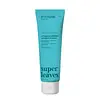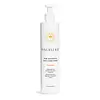What's inside
What's inside
 Key Ingredients
Key Ingredients

No key ingredients
 Benefits
Benefits

 Concerns
Concerns

 Ingredients Side-by-side
Ingredients Side-by-side

Water
Skin ConditioningCetearyl Alcohol
EmollientGlycerin
HumectantCaprylic/Capric Triglyceride
MaskingBehentrimonium Methosulfate
Zea Mays Starch
AbsorbentGlycine Soja Oil
EmollientDicaprylyl Ether
EmollientSodium Benzoate
MaskingPotassium Sorbate
PreservativeCitric Acid
BufferingNasturtium Officinale Extract
PerfumingTropaeolum Majus Extract
AntimicrobialSodium Hydroxide
BufferingVaccinium Myrtillus Leaf Extract
AstringentWater, Cetearyl Alcohol, Glycerin, Caprylic/Capric Triglyceride, Behentrimonium Methosulfate, Zea Mays Starch, Glycine Soja Oil, Dicaprylyl Ether, Sodium Benzoate, Potassium Sorbate, Citric Acid, Nasturtium Officinale Extract, Tropaeolum Majus Extract, Sodium Hydroxide, Vaccinium Myrtillus Leaf Extract
Water
Skin ConditioningBehentrimonium Methosulfate
Cetearyl Alcohol
EmollientGlycerin
HumectantStearalkonium Chloride
PreservativeAloe Barbadensis Leaf Juice
Skin ConditioningCaprylic/Capric Triglyceride
MaskingButyrospermum Parkii Butter
Skin ConditioningSodium Benzoate
MaskingOryza Sativa Bran Oil
EmollientPersea Gratissima Oil
Skin ConditioningCocos Nucifera Oil
MaskingHydrolyzed Quinoa
Skin ConditioningHydrolyzed Rice Protein
Skin ConditioningCamellia Sinensis Leaf Extract
AntimicrobialWater, Behentrimonium Methosulfate, Cetearyl Alcohol, Glycerin, Stearalkonium Chloride, Aloe Barbadensis Leaf Juice, Caprylic/Capric Triglyceride, Butyrospermum Parkii Butter, Sodium Benzoate, Oryza Sativa Bran Oil, Persea Gratissima Oil, Cocos Nucifera Oil, Hydrolyzed Quinoa, Hydrolyzed Rice Protein, Camellia Sinensis Leaf Extract
 Reviews
Reviews

Ingredients Explained
These ingredients are found in both products.
Ingredients higher up in an ingredient list are typically present in a larger amount.
Behentrimonium Methosulfate is an ammonium salt. It is mainly used to prevent static in haircare products as a surfactant.
Surfactants have differing ends: one side is hydrophilic while the other end is hydrophobic.
Surfactants also help your cleansers remove pollutants more easily from the skin.
Learn more about Behentrimonium MethosulfateThis ingredient is an emollient, solvent, and texture enhancer. It is considered a skin-softener by helping the skin prevent moisture loss.
It helps thicken a product's formula and makes it easier to spread by dissolving clumping compounds.
Caprylic Triglyceride is made by combining glycerin with coconut oil, forming a clear liquid.
While there is an assumption Caprylic Triglyceride can clog pores due to it being derived from coconut oil, there is no research supporting this.
Learn more about Caprylic/Capric TriglycerideCetearyl alcohol is a mixture of two fatty alcohols: cetyl alcohol and stearyl alcohol. It is mainly used as an emulsifier. Emulsifiers help prevent the separation of oils and products. Due to its composition, it can also be used to thicken a product or help create foam.
Cetearyl alcohol is an emollient. Emollients help soothe and hydrate the skin by trapping moisture.
Studies show Cetearyl alcohol is non-toxic and non-irritating. The FDA allows products labeled "alcohol-free" to have fatty alcohols.
This ingredient is usually derived from plant oils such as palm, vegetable, or coconut oils. There is debate on whether this ingredient will cause acne.
Due to the fatty acid base, this ingredient may not be Malassezia folliculitis safe.
Learn more about Cetearyl AlcoholGlycerin is already naturally found in your skin. It helps moisturize and protect your skin.
A study from 2016 found glycerin to be more effective as a humectant than AHAs and hyaluronic acid.
As a humectant, it helps the skin stay hydrated by pulling moisture to your skin. The low molecular weight of glycerin allows it to pull moisture into the deeper layers of your skin.
Hydrated skin improves your skin barrier; Your skin barrier helps protect against irritants and bacteria.
Glycerin has also been found to have antimicrobial and antiviral properties. Due to these properties, glycerin is often used in wound and burn treatments.
In cosmetics, glycerin is usually derived from plants such as soybean or palm. However, it can also be sourced from animals, such as tallow or animal fat.
This ingredient is organic, colorless, odorless, and non-toxic.
Glycerin is the name for this ingredient in American English. British English uses Glycerol/Glycerine.
Learn more about GlycerinSodium Benzoate is a preservative. It's used in both cosmetic and food products to inhibit the growth of mold and bacteria. It is typically produced synthetically.
Both the US FDA and EU Health Committee have approved the use of sodium benzoate. In the US, levels of 0.1% (of the total product) are allowed.
Sodium benzoate works as a preservative by inhibiting the growth of bacteria inside of cells. It prevents the cell from fermenting a type of sugar using an enzyme called phosphofructokinase.
It is the salt of benzoic acid. Foods containing sodium benzoate include soda, salad dressings, condiments, fruit juices, wines, and snack foods.
Studies for using ascorbic acid and sodium benzoate in cosmetics are lacking, especially in skincare routines with multiple steps.
We always recommend speaking with a professional, such as a dermatologist, if you have any concerns.
Learn more about Sodium BenzoateWater. It's the most common cosmetic ingredient of all. You'll usually see it at the top of ingredient lists, meaning that it makes up the largest part of the product.
So why is it so popular? Water most often acts as a solvent - this means that it helps dissolve other ingredients into the formulation.
You'll also recognize water as that liquid we all need to stay alive. If you see this, drink a glass of water. Stay hydrated!
Learn more about Water